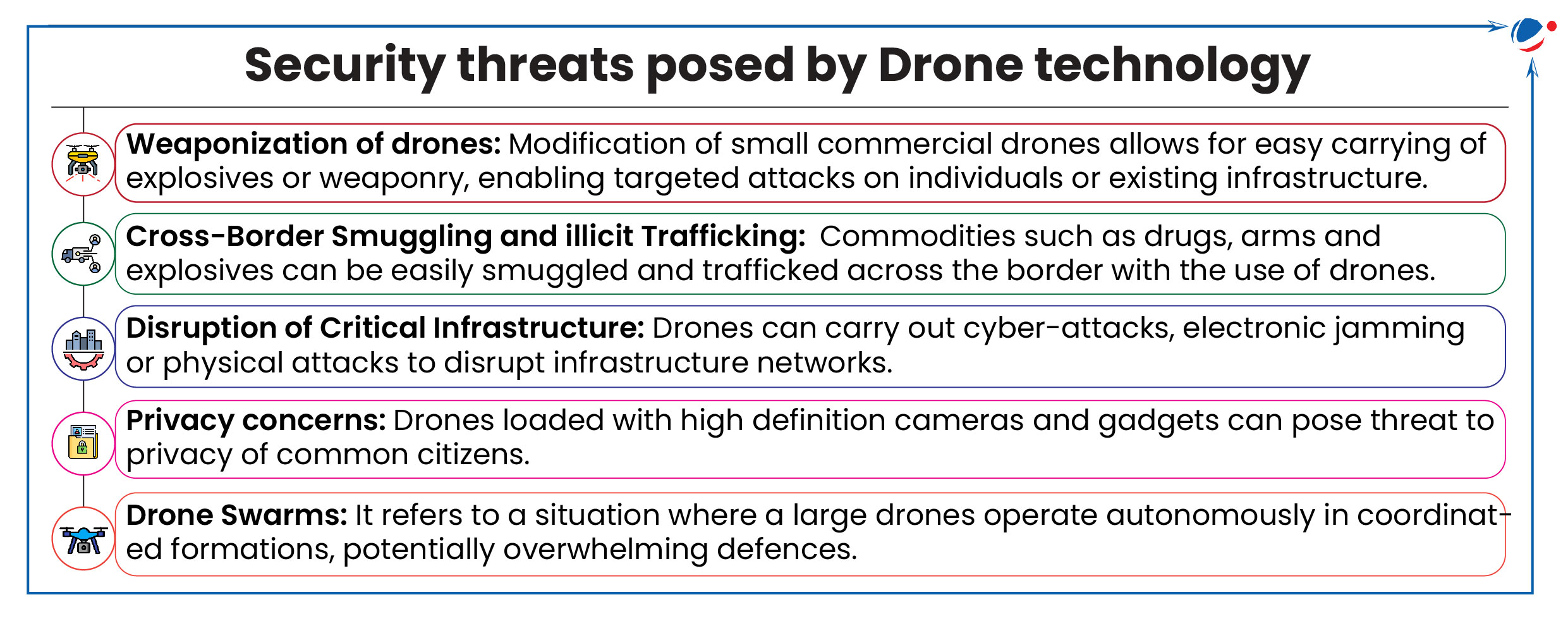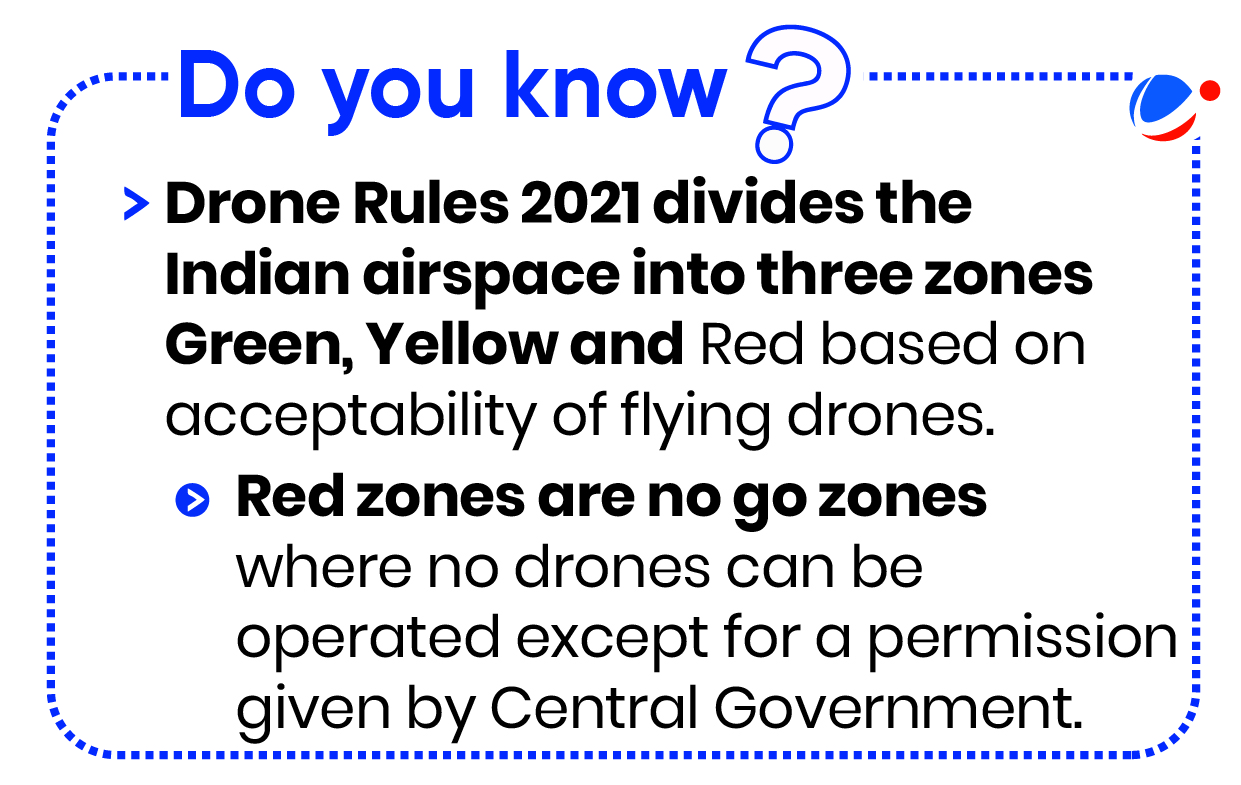Why in the News?
The Assam Rifles and CRPF have deployed anti-drone systems in Manipur to counter rogue drones.
More on the News
- In Manipur, armed militia groups are using "impact explosives" attached to drones that can fly at higher altitude to drop the bombs.
- To counter such attacks, security personnel are deploying anti-drone systems in vulnerable areas.
- Anti-drone systems are capable of performing real time search, detection, tracking and neutralization (Soft/ Hard Kill) of the flying drones
- Additionally, Manipur Director General of Police (DGP) is also reported to have set up a committee of five top officials to study drones used by militants, gather evidence, and suggest ways to counter them.
Role of Drones in Security Management
- Border Security: They monitor large areas, enhancing border surveillance and reconnaissance even in difficult areas where deploying human intelligence is not possible (e.g. rugged terrain).
- It can also be used for military logistics and striking the enemy or its infrastructure in deep, inhospitable locations.
- Real-time Intelligence Gathering: Drones with advanced sensors provide real-time data for better situational awareness in conflict zones.
- Tool for 'Psychological Warfare': Constant presence of UAVs in conflict zones creates a sense of unease and helplessness among enemies creating psychological pressure. Moreover, fear of sudden strikes adds another layer of deterrence.
- Replacing manned aircrafts: It helps in achieving military goals without the risk posed to pilot's life during security operations.
- Maintaining law and order: Drones can be used by Police to monitor large crowds, surveillance of illegal activities, search and rescue operations etc.
- Precision targeting: UAVs, equipped with laser-guided missiles enables militaries to conduct surgical strikes against high-value targets reducing collateral damage and civilian casualties
- Cost Efficiency and Scalability: Drones offer cost-effective surveillance capabilities without significant investments. Moreover. It requires less maintenance, fewer resources, and can be easily and quickly deployed.

Initiatives by India to tackle drone threats
|
Way ahead to prevent misuse of drones

- Comprehensive National Action: A national action should be developed to prevent, protect and respond to and recover from use of UAV by non-State armed groups, including for terrorism-related purposes.
- In 2019, Ministry of Civil Aviation released 'National Counter Rogue Drone Guidelines' to lay out guidelines assessing drone threat.
- Supply chain security measures: Ensure thorough record-keeping for UAV transfers, and promote codes of conduct, due diligence, and compliance activities.
- Raise awareness: Highlight regulatory requirements for the safe and legal use of drones, and prepare the public for potential incidents involving UAVs.
- Private Sector: Encourage collaboration with the private sector, industry, and academia for early detection and precautionary measures against threats from non-state actors.
- Vulnerability Assessments: Regular assessments should be conducted to identify protection gaps in critical infrastructure and public targets. Enhanced training and equip teams to ensure that they can safely and effectively respond to incidents.
- Adoption of robust Cyber security measures: Defence strategies such as honey drones (HDs) can be used to lure cyber attackers away from critical UAVs missions by using lightweight virtual machines to redirect attacks. It can help in ensuring a mission's operational and secure.
- Strengthening the operational framework:
- Licensing: Every drone should be registered and licensed. It will ease authorities in identification of the owner of any harmful drone.
- Flying Permit: A flying permit similar to a driving license should be issued with a registered drone
- Multi-factor authentication: Rigid authentication methods can help in stopping several common security threats.
- Declaration of Restricted zones: Map-based public applications should also indicate areas that are no-fly zones for UAV/drones
Conclusion
As drone technology continues to evolve with advent of emerging technologies such as AI and machine learning, India should adopt a proactive and multi-faceted approach to create robust regulatory framework and invest in counter drone industry to focus on its research and development activities so that it can support law enforcement agencies




